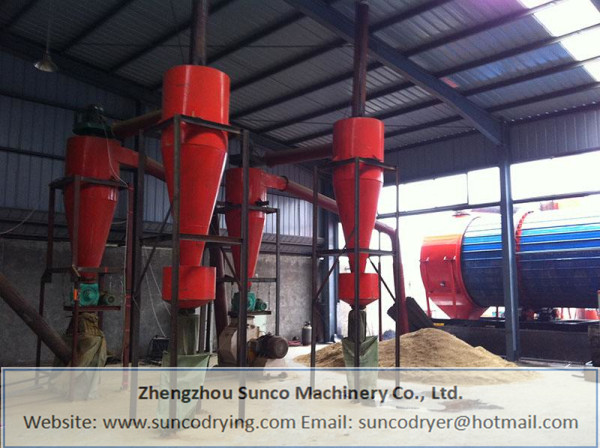The task of the sawdust dryer is to remove the excess moisture in the sawdust to adapt to different purposes and quality requirements.
The basic principle of sawdust drying is to use the moisture content gradient, temperature gradient and water vapor pressure gradient of sawdust to make the moisture continuously move from the inside of sawdust to the surface in the form of liquid state and gas state, and evaporate to the drying medium through the surface of sawdust: the internal moisture movement speed is in harmony with the surface moisture evaporation intensity, making the sawdust evenly dry from the outside to the inside.
Take the conventional drying process of sawdust as an example: firstly, the high temperature (above 100 ℃) and high humidity (saturated or nearly saturated) circulating air are used to preheat the sawdust. When the inside of the sawdust is heated to the specified temperature, the temperature and relative humidity of the medium are reduced according to the parameters at the initial stage of the drying reference, The driving force of moisture content gradient, temperature gradient and water vapor pressure gradient is formed in the direction of sawdust thickness, which forces the moisture in sawdust to move from the inside to the outside, and the moisture on the surface of sawdust evaporates, then the sawdust drying process can start.

Then according to the sawdust drying standard, the temperature of the medium is gradually increased and the relative humidity is reduced, so that the moisture in the sawdust is evenly removed from the surface to the inside until the sawdust drying process is over. In the drying process, the internal stress, cracking and deformation should be eliminated or reduced as much as possible to ensure the sawdust drying quality without reducing the physical and mechanical properties of the sawdust.





